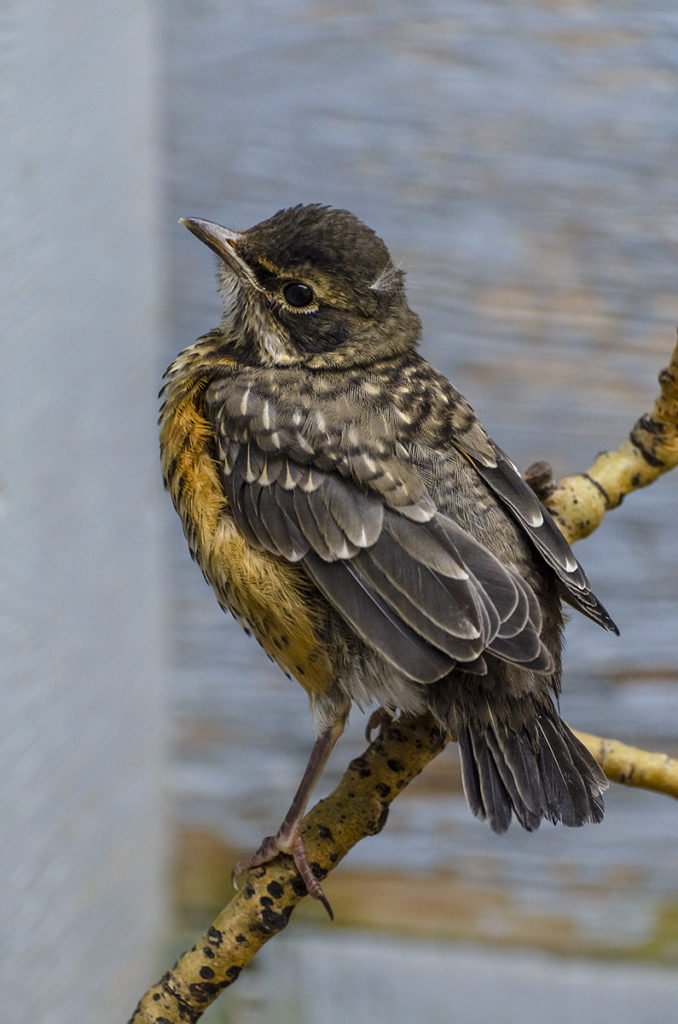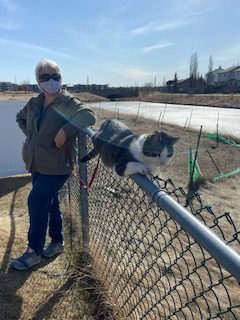By Alisha Kadam, AIWC Volunteer
Popularity brings problems….
Cats are funny, cuddly, and playful. Not surprisingly, they’re also the most popular pet animal in Canada and most other countries around the world. Almost 38% of all households in Canada are home to at least one cat, while about 35% of households are home to companion dogs. According to a recent report by the Canadian Federation of Human Societies, the domestic cat population in Canada is approximately 10 million cats! [1]
In recent years, humane organizations in Canada and elsewhere have been discouraging cat owners from providing their cats with free-roaming outdoor access. Giving cats unsupervised outdoor access can have significant negative impacts on the surrounding environment and wildlife, especially small birds and mammals. [2] Additionally, it also puts the cat itself in harms’ way though the risk of vehicle collisions and of predation by other animals. [3]

Invasive predators and the effect on native species
Cats are carnivores, and they maintain strong predatory instincts despite being domesticated and well-fed. Their main targets are small mammals (like mice, squirrels), young rabbits and hares, and birds (like doves and songbirds). A study that observed domestic cats with camera-equipped drones during their outdoor free-roaming time found that over half of the cats successfully hunted 2-5 prey animals every week! [4]
Feral domestic cats are listed as an invasive species in Canada and many other nations worldwide as they easily overwhelm and devastate populations of native wildlife. However, It is important to note that non-feral pet cats with unsupervised outdoor access also have huge negative impacts on native wildlife. For example, predation by cats is listed as one of the primary causes for the extinction of 22 small mammal species and dozens of birds in Australia, most notably the paradise parrot. Similarly, cats have been responsible for the extinction of six endemic bird species and over 70 localized subspecies in New Zealand, most notably the Lyall’s wren. [2, 5] Closer to home, cats have been estimated to kill between 100 and 350 million birds annually in Canada, and twenty-three species of birds are at direct risk of becoming vulnerable due to cat predation in this country. Bird species that nest on or close to the ground are especially vulnerable. [2]

In an indirect way, unsupervised outdoor cats can also have serious impacts on the food chain. For example, every mouse eaten by a cat cannot be eaten by a hawk or another predator in the ecosystem that needs that food to survive or feed their young. [6]
Being outside is risky for cats too!
In addition to the safety of native wildlife, staying mostly indoors with only supervised outdoor time (for example, daily walks on a lead) is significantly better for the cat’s welfare too.
One of the main reasons for restricting cats to supervised outdoor time is the high risk of injury and death caused by vehicular collisions or encounters with predatory wildlife. A 10-year long study conducted at a Canadian veterinary clinic in Saskatchewan found that 87% of sudden cat deaths caused by injury were caused by vehicular collisions. Wildlife and dog predation on cats can also be extremely dangerous. Coyote attacks in particular are a common problem for unsupervised cats in Alberta as they freely roam outdoors. In Calgary, examinations of urban coyote scats have been found to occasionally contain cat remains. [7]
Cats roaming outdoors are also at greater risk of being exposed to disease due to their interactions with other pets and wildlife. Similarly, there is an increased risk of acquiring parasites such as fleas, ticks, or disease-causing bacteria if cats visit unsanitary spaces. [2]

How to entertain your cat safely
There is no doubt that cats need a lot of mental and physical stimulation and promoting their natural behaviors, such as hunting, exploring, and climbing are crucial to their overall wellbeing. Fortunately, there are many alternatives to unsupervised outdoor time that can be used instead to keep your feline companion happy and healthy.
- Backyard catios (enclosed patios for cats) or balcony enclosures for apartments have been very trendy in recent years as more and more cat owners understand the risks associated with letting cats roam unsupervised. Catios and properly enclosed balconies provide a safe “outdoor” environment for cats while still being in a supervised space away from predators. [8]

- Walks on a lead similar to walking dogs are also a popular and safer alternative. With some training, cats can be taught to walk on a lead and the owners can control any interactions the cat has with other animals. [9]
- Engaging toys and dedicated play time with the owner (15-30 mins daily) can be an excellent way to keep indoor cats entertained and active. Toys and common objects that engage a cat’s curiosity (such as boxes, paper bags, baskets, etc.) should be rotated around the residence to encourage exploration. [8]
- High perches by the window or a scratching post with high perches will encourage a cat’s natural behaviors of climbing, scratching, perching, and monitoring the surrounding area. Vertical spaces like these also add to the total space available to cats and are excellent additions to apartments. [2]
- A companion for your companion can help prevent boredom and encourage the acts of playing, chasing and mutual grooming and cuddling. Many cats enjoy the company of other cats or in some cases, dogs! [9]
Want more resources on keeping cats inside and helping your local birds? Be sure to check out http://www.catsandbirds.ca!
References
| [1] | “Cats in Canada 2017: A Five-Year Review of Cat Overpopulation,” Canadian Federation of Human Socities, Toronto, 2017. |
| [2] | S. A. N. L. Tan SML, “Uncontrolled Outdoor Access for Cats: An Assessment of Risks and Benefits.,” Animals (Basel), vol. 10, no. 2, 2020. |
| [3] | “Indoor Cats vs. Outdoor Cats,” American Humane Association, [Online]. Available: https://www.americanhumane.org/fact-sheet/indoor-cats-vs-outdoor-cats. |
| [4] | H. S. C. J. A. K. M. G. Loyd K.A.T., “Quantifying free-roaming domestic cat predation using animal-borne video cameras,” Biol. Conserv., vol. 160, p. 183–189, 2013. |
| [5] | J. Hollingsworth, “The case against cats: Why Australia has declared war on feral felines,” CNN, 29 April 2019. [Online]. Available: https://www.cnn.com/2019/04/26/asia/feral-cats-australia-intl/index.html. [Accessed 16 February 2021]. |
| [6] | A. M. P. M. C. E. Trouwborst, “Domestic cats and their impacts on biodiversity: A blind spot in the application of nature conservation law,” People Nat, vol. 2, pp. 235-250, 2020. |
| [7] | A. A. Olsen TF, “Causes of sudden and unexpected death in cats: a 10-year retrospective study,” Can Vet J, vol. 42, no. 1, pp. 61-62, 2001. |
| [8] | “Should I keep my cat indoors? Is unsupervised outdoor time OK?,” BCSPCA, [Online]. Available: https://spca.bc.ca/faqs/indoor-cats-vs-outdoor-cats/. [Accessed 17 February 2021]. |
| [9] | “Indoor vs Outdoor cats,” American Humane Society, 25 August 2016. [Online]. Available: https://www.americanhumane.org/fact-sheet/indoor-cats-vs-outdoor-cats/. [Accessed 17 February 2021]. |







2 thoughts on “House Cat Conundrum”
Thanks.|
Appreciate the recommendation. Let me try it out.